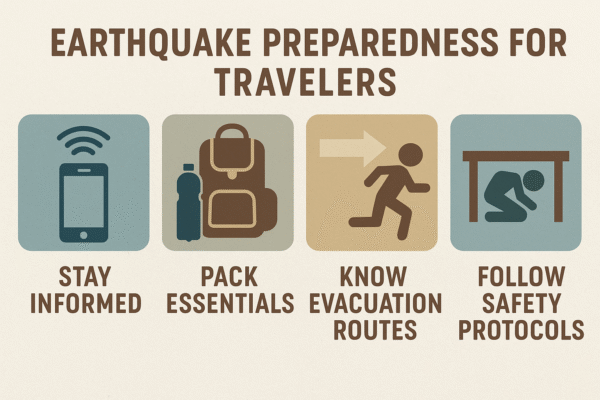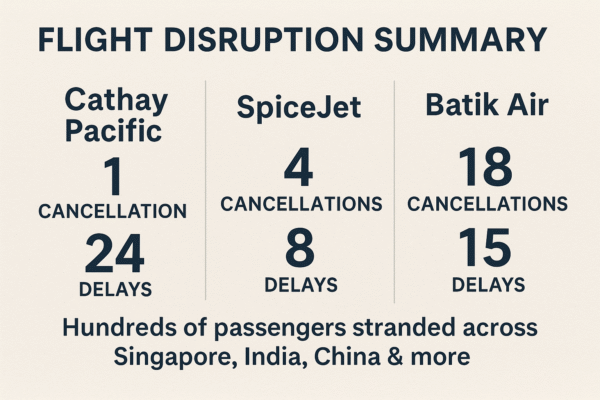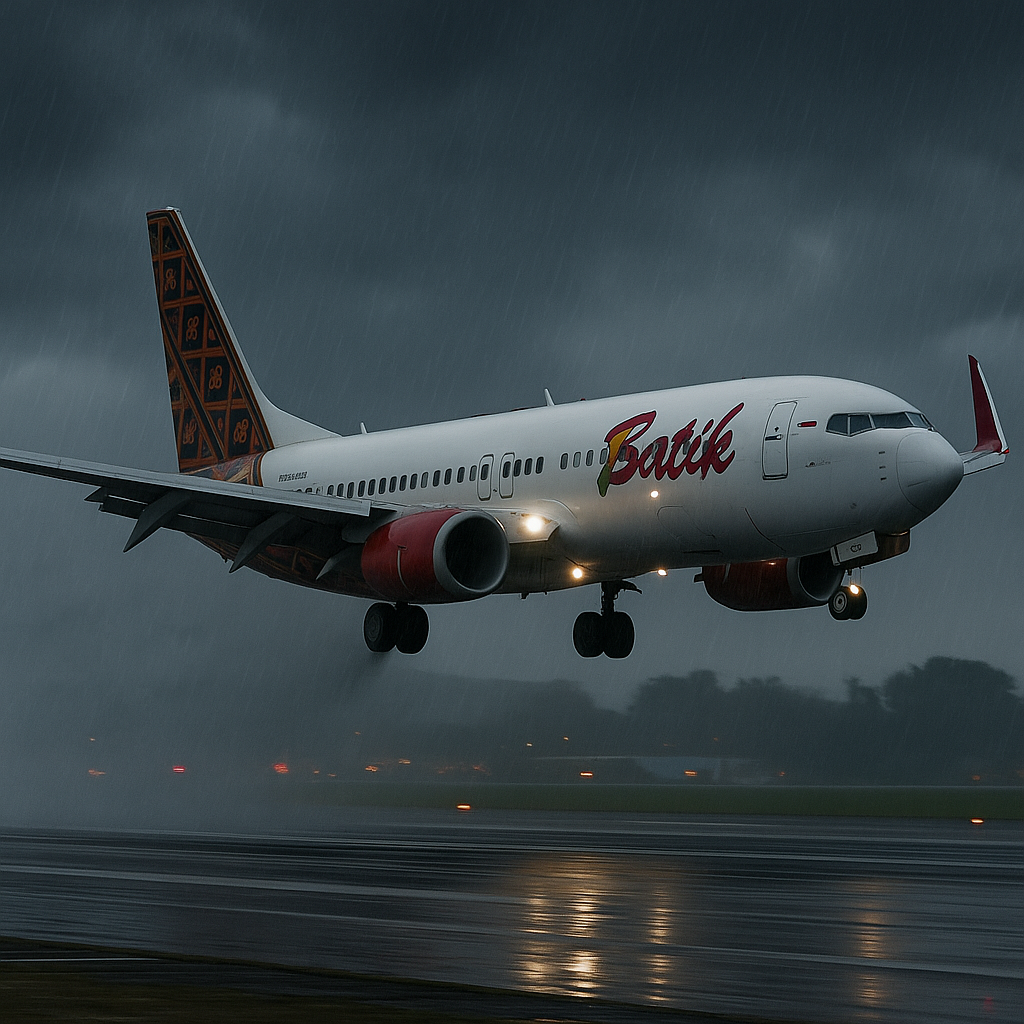JAKARTA, INDONESIA – In a harrowing aviation incident that underscores the growing challenges of flying in tropical weather conditions, 177 passengers aboard Batik Air Flight ID-6231 from Ambon to Jakarta escaped unharmed after their Boeing 737-800 encountered severe turbulence and crosswinds during landing at Soekarno-Hatta International Airport on June 28, 2025.
The aircraft, flying a routine domestic evening route, was battered by torrential rain and violent gusts as it approached the runway. Witnesses and airside video footage revealed the aircraft’s right wing dipped dangerously low, its engine inches from scraping the tarmac, as the flight crew battled strong lateral winds and poor visibility.
Thanks to the exceptional skill and rapid response of the cockpit crew, the aircraft was stabilized in the final seconds before touchdown—averting what could have been a serious runway incident.
Weather Turns Routine Landing Into a High-Risk Operation
According to initial reports from Batik Air and Indonesian aviation officials, the plane entered storm-heavy airspace over Jakarta just minutes before descent. Gusting crosswinds, fluctuating air pressure, and low-altitude wind shear made for treacherous approach conditions.
As the aircraft lined up for Runway 25L, one powerful crosswind blast caused it to tilt sharply, forcing the right wing and engine to descend dangerously close to the ground. Ground crews and nearby passengers watched in alarm as the jet narrowly avoided impact.
Despite these severe conditions, the pilots regained control and completed a full safe landing, with no injuries reported and no damage sustained to the aircraft’s airframe or engines.
Passengers Shaken But Safe
While no emergency evacuation was required, passengers onboard described the landing as “terrifying” and “unsteady.” Many clutched armrests and braced for impact as the aircraft shook violently and tilted during descent. Once the aircraft came to a stop and taxied to the gate, passengers applauded the flight crew for managing to land safely under such intense conditions.
Post-flight medical checks revealed no health concerns, and the aircraft was cleared after inspection to resume scheduled service to Kuala Lumpur, confirming there was no structural damage.
Flight Crew Commended for Professionalism
Batik Air has praised the flight crew’s training and judgment, noting that their manual control decisions, made in seconds, were crucial in avoiding a possible accident. Aviation analysts familiar with Southeast Asian weather patterns explained that monsoon-season landings often require pilots to anticipate microbursts, wind shear, and downdrafts, particularly during afternoon and evening hours.
Experts confirmed that the Boeing 737-800 is built to withstand high turbulence, but automated systems alone are insufficient in sudden wind-related events—pilot response remains critical.
A Wake-Up Call on Climate Challenges in Aviation
The incident adds to a growing list of weather-related aviation scares across Southeast Asia, where climate volatility has increased the frequency of unpredictable storm activity. June and July mark the peak of Indonesia’s wet season, with Jakarta frequently experiencing violent afternoon thunderstorms.
Aviation meteorologists with the Indonesian Agency for Meteorology, Climatology, and Geophysics (BMKG) confirmed that weather conditions on June 28 included low-altitude wind shear, high humidity, and visibility-reducing rain showers.
These evolving climate patterns mirror global trends. With rising surface temperatures and intensified jet stream movements, aviation operations worldwide are facing greater seasonal risks.
What Makes Monsoon Flying So Dangerous?
Wind shear—a sudden change in wind direction or speed over a short distance—remains one of the most dangerous phenomena for pilots, especially during takeoffs and landings. It can disrupt the aircraft’s lift, causing it to bank suddenly or lose altitude, as was observed in the Batik Air incident.
Further complicating matters, turbulence and visibility during Southeast Asia’s monsoon months make flight path adjustments and go-arounds more frequent. These challenges underscore the importance of updated training modules that simulate real-world weather instability.
Industry Response and Next Steps
Indonesia’s Directorate General of Civil Aviation (DGCA) is reportedly reviewing the incident for procedural compliance and weather protocol effectiveness. While the incident did not result in injuries or aircraft damage, it will likely influence policy adjustments for weather-related pre-landing assessments, especially at high-traffic airports like Jakarta’s Soekarno-Hatta.
Batik Air stated that it is intensifying simulator sessions for crosswind landings and emergency maneuvers, a step aligned with global aviation trends to prepare crews for climate-driven hazards.
Airports in tropical regions, including Jakarta, are also expected to upgrade their weather monitoring systems, focusing on runway-specific wind analysis, Doppler radar deployment, and real-time alert communications between control towers and cockpits.
Public Awareness and Traveler Takeaways
While the flight landed without damage, the incident serves as a critical reminder to travelers: weather delays and diversions are safety decisions, not inconveniences. The ability of pilots to override automation and take decisive manual control is vital—and increasingly common during extreme weather seasons.
Passengers are advised to:
- Stay informed of seasonal weather conditions at destinations
- Expect possible delays during monsoon months
- Trust flight crews and ground staff during rerouting decisions
Conclusion: Adaptation Is Key to Safer Skies
The Batik Air near-miss in Jakarta on June 28, 2025, illustrates a broader shift in aviation dynamics. As climate patterns grow more erratic, airline safety strategies must evolve with equal urgency. Whether through enhanced training, advanced weather systems, or better in-air coordination, the future of flight in storm-prone regions will rely on a human-technology partnership.
For now, the industry has much to learn from this narrowly avoided disaster—an event that, thanks to expert piloting, became a story of resilience, not tragedy.
For more travel news like this, keep reading Global Travel Wire
















